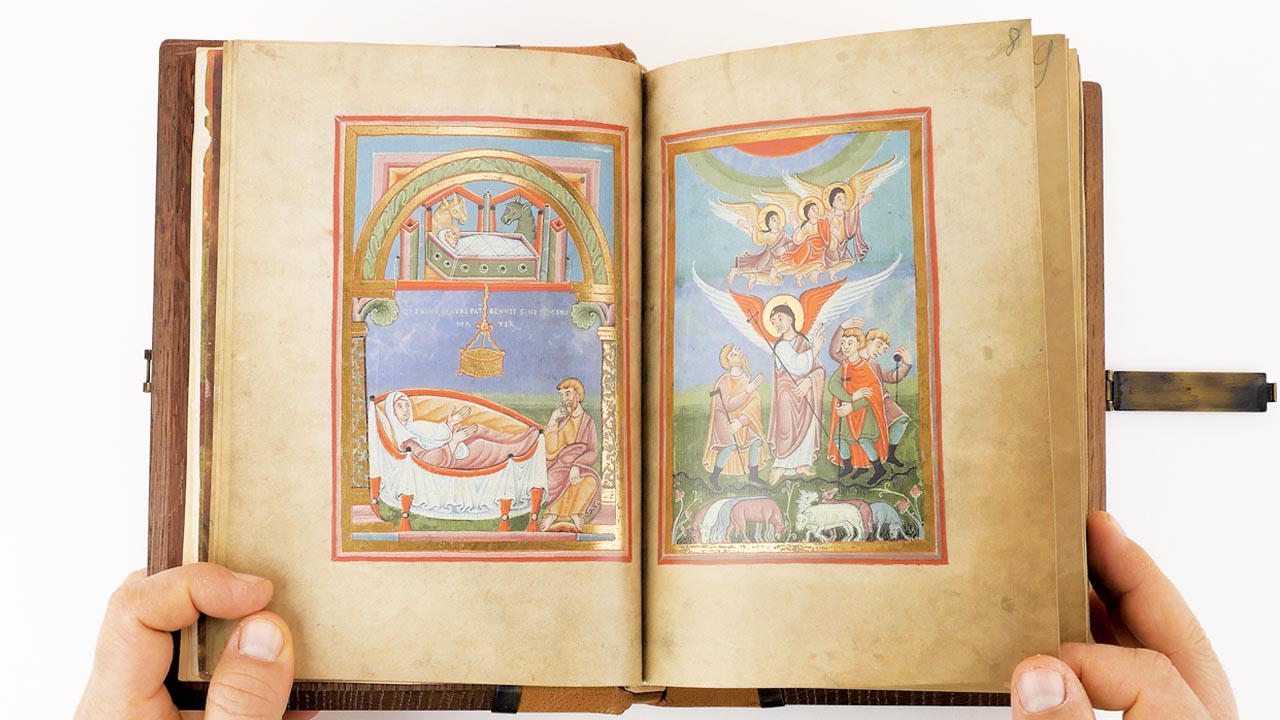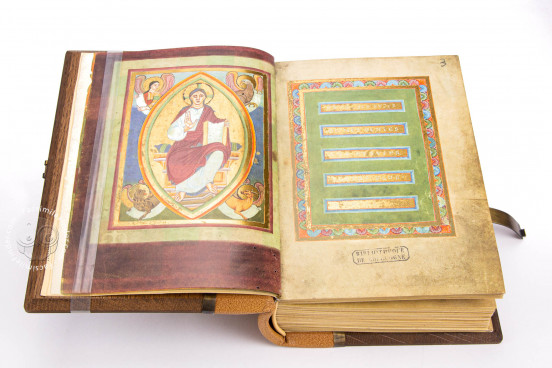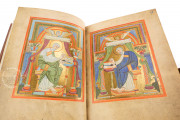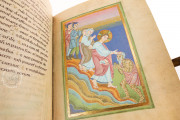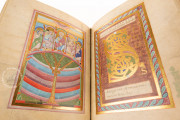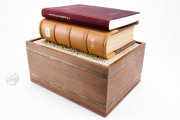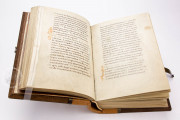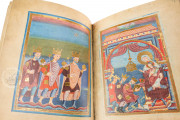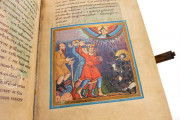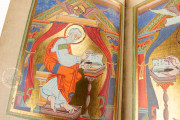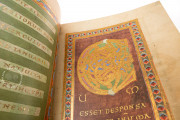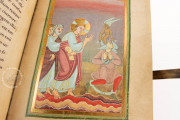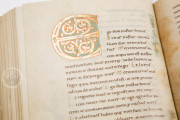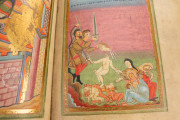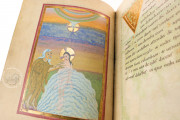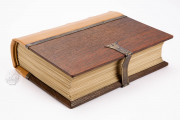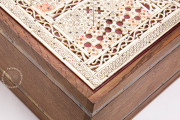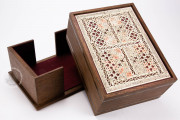Created around 1030-1031, the Echternach Pericopes is a treasure of Ottonian book manufacture admired for the vibrancy and inventiveness of its paintings. It is a Christian liturgical book of selections from the Gospels to be read at Mass. It was written and illuminated at the Benedictine monastery at Echternach, which achieved its creative apotheosis at the time the sumptuous pericopes manuscript was produced. It boasts forty-one full-page miniatures, carpet pages, incipit pages, entirely painted text pages, and large decorated initials.
The manuscript's contents are arranged in liturgical order in two principal cycles: (1) the Christological feasts and Sundays of the year and (2) saints' feasts, followed by votive masses and a Mass for the Dead. Most of the miniatures depict events in the life of Christ and introduce major Christological feasts.
Four Talented Painters
The Echternach Pericopes opens with a pair of carpet pages, a full-page miniature of Christ in Majesty, a painted text page, and full-page portraits of the four Evangelists (fols. 1v-5r). The book also boasts twenty-seven scenes from the life of Christ (with an emphasis on the ministry) and ten scenes from the lives of saints. It is further adorned with initials and decorated text pages of sumptuous colors, including purple and gold.
The painters of the miniatures, of which there were three, employ a restrained monumental style characterized by exaggerated hand gestures. The incipit pages were collaborations between these painters and a fourth, who specialized in decorated initials.
Emphasis on Saint Stephen
The manuscript's text and picture cycle uniquely emphasize Saint Stephen, to whom no fewer than eight miniatures are dedicated (fols. 11r and 157v-160v). Seven illustrate the transfer of the saint's relics in the fifth century. The book may have been intended for use at a church dedicated to that saint, but specifics of its patronage are unknown, and it remained at Echternach into the twelfth century.
Sumptuous Narratives
The Echternach Pericopes is among the most richly decorated Ottonian liturgical manuscripts. The narrative scenes are set against stylized backgrounds of burnished gold or luminous washes of tonally graded color. They are framed with simple bands of gold, red, and green.
A Luxury Product
A single scribe, who also contributed to the Codex Aureus of Echternach, wrote the main text in long lines (single column) in a refined Caroline Minuscule. A second scribe—a chrysographer (writer of gold)—enlivened the pages with headings and other texts in display script.
The Echternach Pericopes is a "twin" with another manuscript, also produced at Echternach, but a little later: the Gospel Lectionary of Emperor Henry III. They are of nearly identical page size—small for liturgical books of the time—and textual contents, but the pictorial programs are different.
A Treasure of Churches
The manuscript made its way to the cathedral of Sankt Peter at Bremen by the thirteenth century when an oath for the archbishop of Bremen was added to the beginning of the book. In the fourteenth century, the carvers of the cathedral choir stalls used the miniatures as models. Discovered in the library of the Jesuitenkolleg of Cologne in the eighteenth century, the manuscript was confiscated by the French Republic in 1794 and taken to the Bibliothèque nationale in Paris. In the restitutions of 1816, the pericopes manuscript was sent to Brussels, where it entered the Royal Library of Belgium, which became the KBR in 2019.
We have 1 facsimile edition of the manuscript "Echternach Pericopes": Echternacher Evangelistar facsimile edition, published by Faksimile Verlag, 2007
Request Info / Price
